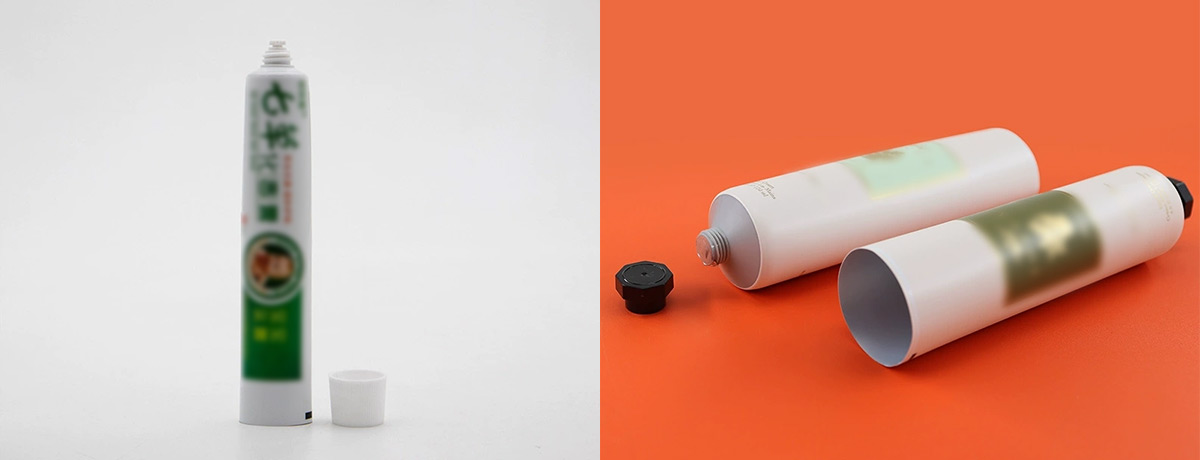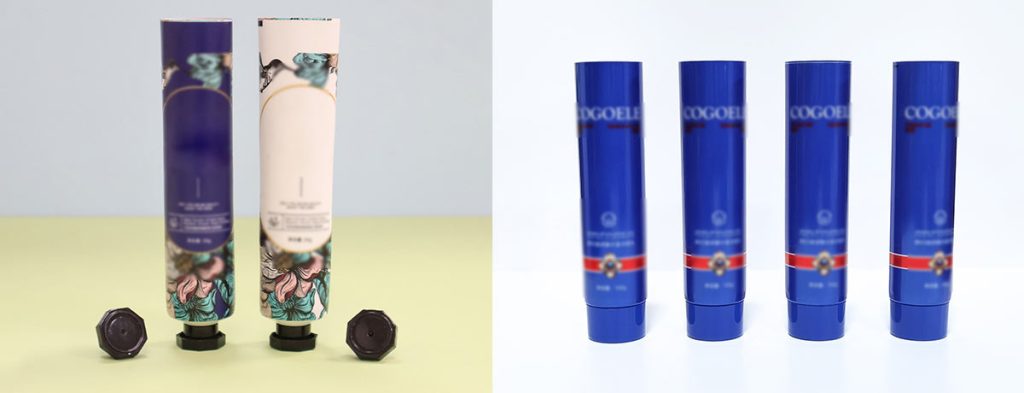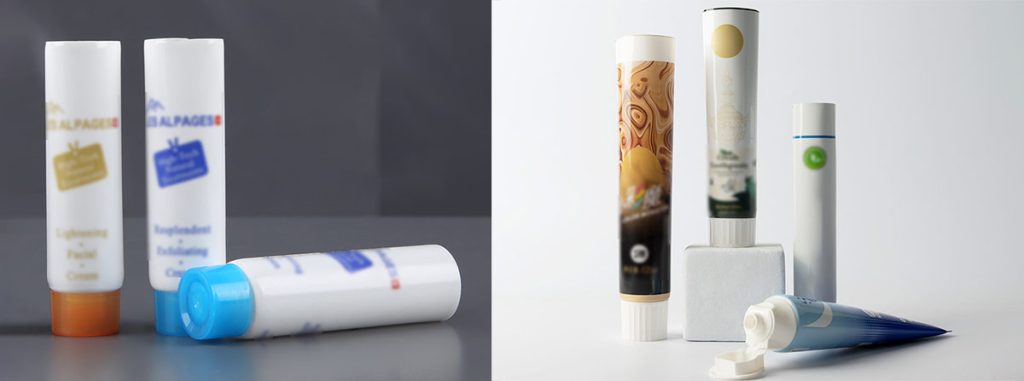

Brands in the personal care and cosmetics sector recognize the value of a premium metallic finish. Consumer demand for visually appealing packaging drives the adoption of metallic look laminates, which deliver vibrant and eye-catching metallic effects. Advanced manufacturing processe and lami tube making machine now allow precise application of metallic layers, resulting in lami tubes with consistent metallic shine. These metallic finishes not only enhance product appeal but also improve shelf presence. A strong metallic look signals quality and innovation, making products more attractive to shoppers.
Key Takeaways
- Metallic finishes enhance product appeal and signal quality, making items more attractive to consumers.
- Brands can choose from various metallization methods, including vacuum metallization, metallic transfer films, and metallic inks, each offering unique benefits.
- Sustainability is crucial; brands should consider the recyclability of materials and the environmental impact of their chosen metallization method.
- Customization options in lami tubes allow brands to create distinctive designs that stand out on crowded shelves.
- Selecting the right metallization method involves evaluating machine compatibility, cost, and desired visual effects for optimal results.
Lami Tubes and Metallic Appeal
Why Metallic Finishes Matter?
The cosmetics and personal care industries continue to favor metallic finishes for their ability to create a premium packaging experience. Recent trends show a strong preference for aluminum finishes, which offer lightweight properties, recyclability, and superior barrier protection. These metallic surfaces not only enhance the aesthetic appeal but also provide branding opportunities that set products apart on crowded shelves.
Consumers often associate metallic packaging with luxury and exclusivity. The reflective quality of metallic surfaces draws attention and highlights distinctive visual effects. Brands use metallic finishes to signal quality, making products appear more valuable and engaging shoppers effectively.
- Metallic finishes add depth and an eye-catching element to packaging.
- They create a premium feel, making products appear more valuable.
- The reflective quality of metallic surfaces attracts attention and enhances design elements.
- Metallics signal quality and exclusivity, engaging consumers effectively.
Consumers also value the protective qualities of metallic packaging. Metals shield products from light, air, and moisture, preserving product integrity and extending shelf life. The shine and luster of metallic packaging add a sophisticated allure, enhancing the design of personal care products.
Customization Options
Laminated tubes offer a wide range of customization options for brands seeking unique metallic effects. The versatility of these tubes supports both mono-material and high-gloss laminate constructions. Mono-material tubes align with sustainability goals and are easier to recycle, while high-gloss laminated tubes provide flexibility in design and are especially popular in cosmetics.
| Printing Technique | Description | Impact on Brand Differentiation |
|---|---|---|
| Offset Printing | Ideal for high-volume production, allows for detailed designs with multiple colors. | Enhances visual appeal and complexity of branding. |
| Silk-Screen Printing | Used for bold, vibrant designs, often in single or few colors. | Creates strong visual identity with simplicity. |
| Hot Stamping | Metallic foils (gold, silver) can be added to create a luxurious look. | Adds a premium feel, distinguishing the brand. |
| Labeling | Adhesive labels can be applied for flexibility in small batches. | Offers customization for limited runs, enhancing uniqueness. |
Mono-material tubes are gaining traction due to their recyclability and cost-effectiveness. High-gloss laminated tubes remain popular for their design flexibility and ability to deliver a striking metallic finish. Brands can choose from metallic transfer films, metallic inks, and hot stamping to achieve the desired metallic look and performance. These options allow for distinctive visual effects and help brands stand out in the market.
| Characteristic | Description |
|---|---|
| Superior Barrier Properties | Protects sensitive products from light, air, and moisture, extending shelf life. |
| Aesthetic Appeal | Supports high-quality digital printing for vibrant branding. |
| Flexibility and Dispensing | Soft and elastic, allowing precise product application without wrinkling. |
| Cost-Effective | Balances the benefits of aluminum and plastic at a lower cost than pure aluminum tubes. |
| Sustainability Options | Increasing use of recyclable and bio-based materials. |
The performance of metallic inks and metallic transfer films further enhances the appeal and functionality of lami tubes. These technologies enable brands to deliver both high-quality design and reliable product performance, making lami tubes a top choice for premium packaging.
Metallization Methods
Modern packaging relies on several metallization methods to achieve a premium metallic appearance in laminated tubes. The three primary techniques include vacuum metallization, metallic transfer films, and metallic inks and coatings. Each method offers unique advantages for creating distinctive visual effects and enhancing both performance and design.
Vacuum Metallization

Vacuum metallization stands out as a leading process for producing a high-gloss metallic finish on lami tubes. This method involves placing a substrate, such as nylon, PET, or PP, inside a vacuum chamber. A thin layer of aluminum is then deposited onto the surface through vapor deposition. The result is a mirror-like metallic layer that delivers exceptional reflectivity and a premium look.
| Aspect | Description |
|---|---|
| Process | Vacuum metallization involves depositing a thin layer of aluminum on substrates in a vacuum chamber. |
| Advantages | Improves barrier performance and aesthetics compared to plastic alone. |
| Limitations | Barrier performance is not as good as aluminum foil, but better than plastic alone. |
| Common Substrates | Nylon, PET, and PP are typical materials used for vacuum metallization. |
Vacuum metallization integrates seamlessly with laminated tube making machine, allowing manufacturers to produce laminated tubes with consistent metallic quality. This process enhances both the barrier properties and the visual appeal of the packaging. Although the barrier performance does not match that of pure aluminum foil, it surpasses standard plastic, making it a preferred choice for many personal care products. The method also supports high-speed production, which increases efficiency in large-scale manufacturing.
Metallic Transfer Films
Metallic transfer films offer another effective metallization technique for lami tubes. The process uses accumulative extrusion bonding (AEB), which includes steps such as extrusion, cutting, expanding, restacking, and annealing. This method bonds metals in their solid state, creating multilayered tubes with uniform wall thickness and diameter.
- The process begins with extrusion of the metallic film onto the laminate substrate.
- The film undergoes cutting and expanding to achieve the desired dimensions.
- Restacking and annealing steps ensure strong bonding and consistent metallic appearance.
- The final product is a laminated tube with a durable, high-quality metallic layer.
Key performance characteristics of metallic transfer films include improved yield strength and reliable bonding. For example, copper-copper tubes produced by this method can see yield strength increase from 83 MPa to 481 MPa, a 480% improvement. The effectiveness of the bonding depends on surface preparation and the amount of deformation during each extrusion pass. Laminated tube making machine can integrate this process, enabling efficient production of tubes with metallic finishes that meet demanding quality standards.
Metallic Inks and Coatings
Metallic inks and coatings provide a versatile approach to metallization for lami tube line. These inks contain metal flakes suspended in various vehicles, such as oxidative varnish, UV-reactive compounds, or water-based dispersions. Manufacturers can select from several types of metallic inks, each offering different characteristics and applications.
| Ink Type | Composition | Characteristics | Typical Applications |
|---|---|---|---|
| Conventional Metallic | Metal flakes in oxidative varnish | Good printability, moderate brilliance | General packaging, commercial printing |
| UV-Curable Metallic | Metal flakes in UV-reactive vehicle | Instant curing, good gloss, no oxidation | Premium packaging, specialty applications |
| Hybrid Metallic | Metal flakes with specialty additives | Enhanced brilliance, improved rub resistance | High-end cosmetics, luxury packaging |
| Water-Based Metallic | Metal flakes in aqueous dispersion | Environmentally friendly, moderate brilliance | Food packaging, sustainable applications |
Metallic inks account for about 22% of commercial metallic finish applications, while metallic transfer films represent around 18%. These inks allow for detailed graphics and branding, making them ideal for products that require both visual impact and flexibility in design. The reflectivity of metallic inks reaches 50-65% of that achieved by vacuum metallization, resulting in a more subdued but still attractive metallic effect. The choice of ink type influences durability, gloss, and environmental impact. For example, UV-curable and hybrid metallic inks offer enhanced brilliance and resistance to wear, making them suitable for luxury packaging.
Manufacturers can apply metallic inks directly onto the laminate surface using laminated tube making machine, ensuring precise control over the final appearance. This method supports a wide range of colors and effects, allowing brands to create distinctive visual effects that set their products apart.
Tip: Selecting the right metallization method depends on the desired metallic effect, required performance, and compatibility with existing manufacturing equipment.
Method Comparison
Visual Impact
Vacuum metallization creates a striking metallic appearance with high reflectivity. This process gives lami tubes a mirror-like surface that stands out on shelves. Brands seeking premium packaging often choose vacuum metallization for its ability to deliver distinctive visual effects. Metallic transfer films also provide a strong metallic look, but the finish may appear slightly less reflective than vacuum metallization. Metallic inks offer flexibility in design, allowing for a wide range of colors and patterns. However, metallic inks produce a softer metallic effect, which can suit brands that want subtle visual distinction. Each metallization method supports unique branding goals and helps products achieve a metallic finish that attracts consumers.
Production Efficiency
Vacuum metallization supports high-speed production and integrates well with laminated tube making machine. This method allows manufacturers to maintain consistent metallic quality across large batches. Metallic transfer films require several steps, such as extrusion and annealing, which can add complexity to the process. However, these films deliver reliable performance and uniform metallic layers. Metallic inks provide the most flexibility, as they can be applied directly to the laminate surface. This approach works well for short runs or custom designs. Brands can select the metallization method that matches their production needs and desired performance.
Sustainability
Sustainability plays a key role in choosing a metallization method. The type of laminate and metallic finish affects recycling rates and end-of-life outcomes. The table below compares common tube types:
| Tube Type | Recycling Rate | End-of-Life Considerations |
|---|---|---|
| ABL Tubes | Requires specialized processing; not suitable for curbside recycling | Multi-layer construction complicates recycling |
| PBL Tubes | Technically recyclable as plastic, but adds complexity | More eco-friendly than ABL, but still challenging |
| Aluminum Tubes | Virtually all can be recycled indefinitely | Gold standard for recyclability |
| Paper Tubes | Better end-of-life profile if coatings are chosen carefully | Can enter paper recycling or composting streams |
Vacuum metallization and metallic transfer films often use multi-layer laminate tube structure, which can complicate recycling. Metallic inks, especially water-based types, offer a more sustainable option when paired with recyclable laminate materials. Brands focused on sustainability should consider both the metallization process and the laminate type to ensure responsible end-of-life outcomes.
Tip: Brands should match their metallization choice to their visual, performance, and sustainability goals for the best results.
Choosing the Best Method
Key Considerations
Selecting the right metallization method for lami tubes requires careful evaluation of several factors. Brands must first assess the compatibility of their chosen metallization process with their laminated tube manufacturing machine. Not all machines support every metallization technique. For example, vacuum metallization often demands specialized equipment to deposit a metallic layer onto the laminate. Metallic transfer films and metallic inks may require different application modules or curing systems.
Cost plays a significant role in the decision-making process. Vacuum metallization usually involves higher initial investment but delivers a striking metallic finish and consistent performance. Metallic inks offer flexibility and lower setup costs, making them suitable for short runs or frequent design changes. Metallic transfer films provide a balance between cost and visual appeal, especially for brands seeking a durable metallic effect.
Sustainability remains a top priority. Brands should consider the recyclability of the laminated tube and the environmental impact of each metallization method. Water-based metallic inks and mono-material laminates support eco-friendly goals. Vacuum metallization and metallic transfer films may complicate recycling due to multi-layer structures.
Tip: Brands should create a checklist that includes machine compatibility, cost, sustainability, and desired metallic effect before choosing a metallization method.
Application Fit
Each metallization technique offers unique advantages for specific applications. Vacuum metallization works best for premium packaging that demands a high-gloss metallic appearance and superior shelf presence. Brands targeting luxury markets often select this method to achieve a mirror-like metallic effect. Metallic transfer films suit products that require enhanced durability and a uniform metallic layer. This method excels in applications where performance and visual consistency matter.
Metallic inks provide unmatched versatility. They allow brands to experiment with colors, gradients, and patterns while maintaining a metallic look. This flexibility makes metallic inks ideal for limited editions, seasonal promotions, or products that need frequent design updates. The choice of metallization should align with the product’s performance requirements, the capabilities of the laminated tube making machine, and the brand’s sustainability objectives.
A simple comparison table can help guide the selection:
| Metallization Method | Best For | Key Benefit |
|---|---|---|
| Vacuum Metallization | Luxury, high-impact packaging | Maximum metallic shine |
| Metallic Transfer Films | Durable, uniform applications | Strong metallic layer |
| Metallic Inks | Custom, flexible designs | Design versatility |
Brands that evaluate these factors can select the metallization method that delivers the best finish, performance, and sustainability for their lami tubes.

Conclusion
Lami tube manufacturers can choose from vacuum metallization, metallic transfer films, and metallic inks to achieve a premium metallic finish. Each method offers unique benefits for visual appeal, durability, and production efficiency. The market continues to shift toward advanced metallic decoration, as brands seek to create stronger consumer connections. Companies interested in advanced metallic solutions can access specialized services:
- Diffusion Bonding Services: Advanced laser imaging and etching for custom metallic parts.
- Materials and Services: Design, engineering, and secondary services for metallic components.
- Capabilities: Blending, bonding, machining, and rapid prototyping.
- Custom Manufacturing: Hermetic assemblies and coatings for various industries.
Selecting the right metallic method depends on product goals and manufacturing capabilities.
FAQ
What Is the Main Benefit of Using Metallic Look Laminates in Lami Tubes?
Metallic look laminates give lami tubes a premium appearance. They help products stand out on shelves. These laminates also improve barrier properties, protecting contents from light, air, and moisture.
Can All Lami Tube Making Machines Handle Metallic Finishes?
Not every machine supports all metallization methods. Some machines require special modules for vacuum metallization or metallic transfer films. Brands should check machine compatibility before choosing a metallic finish.
Are Metallic Lami Tubes Recyclable?
Recyclability depends on the tube’s construction. Mono-material tubes with water-based metallic inks offer better recycling options. Multi-layer tubes or those with metallic transfer films may need specialized recycling processes.
How Do Metallic Inks Compare to Vacuum Metallization for Visual Impact?
Vacuum metallization creates a mirror-like shine. Metallic inks provide a softer, more subtle effect. Brands choose based on the desired look and product positioning.
Which Metallization Method Is Most Cost-Effective for Short Runs?
Metallic inks usually offer the best value for small batches or frequent design changes. They require less setup and allow for flexible, custom designs.
